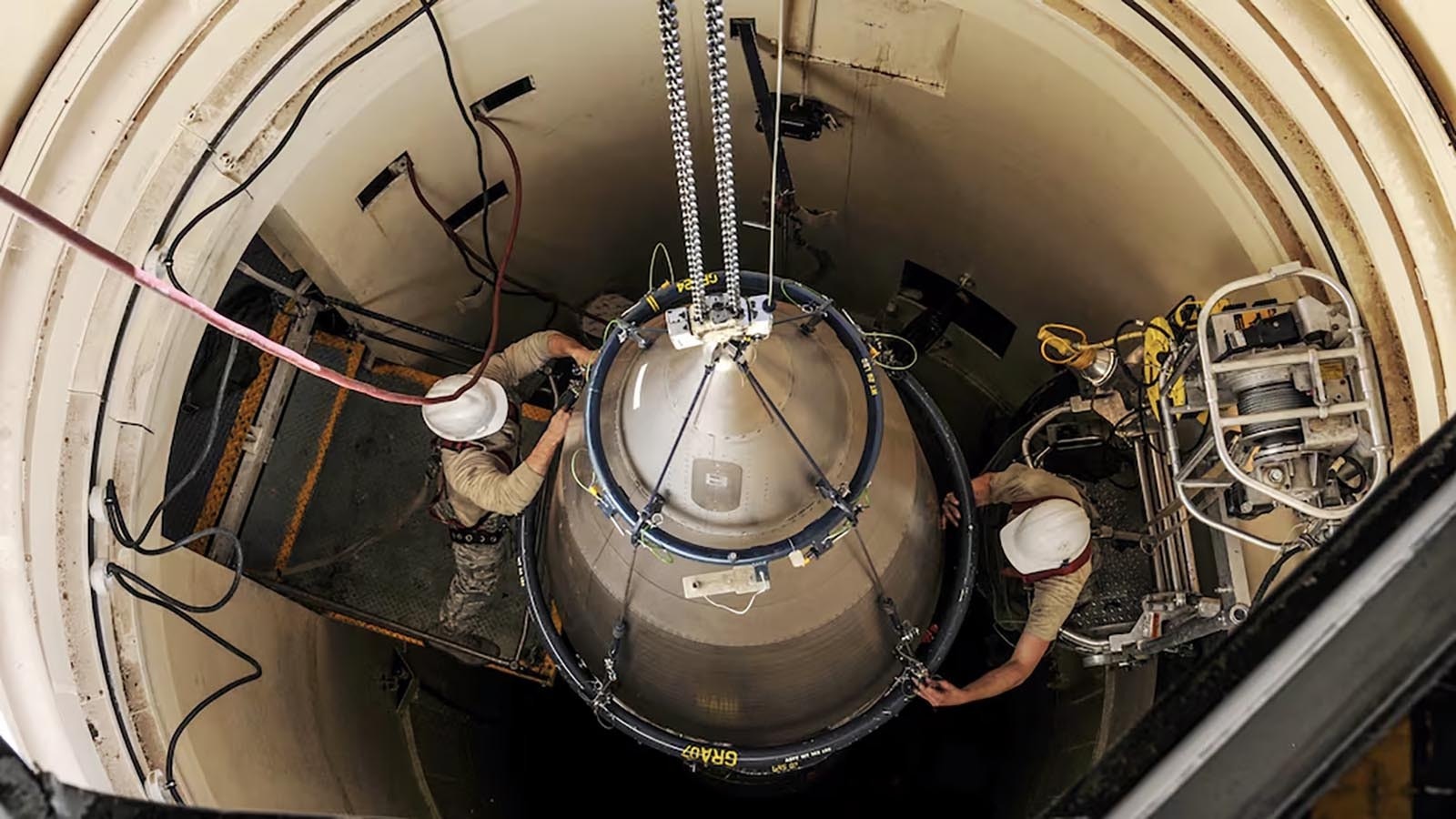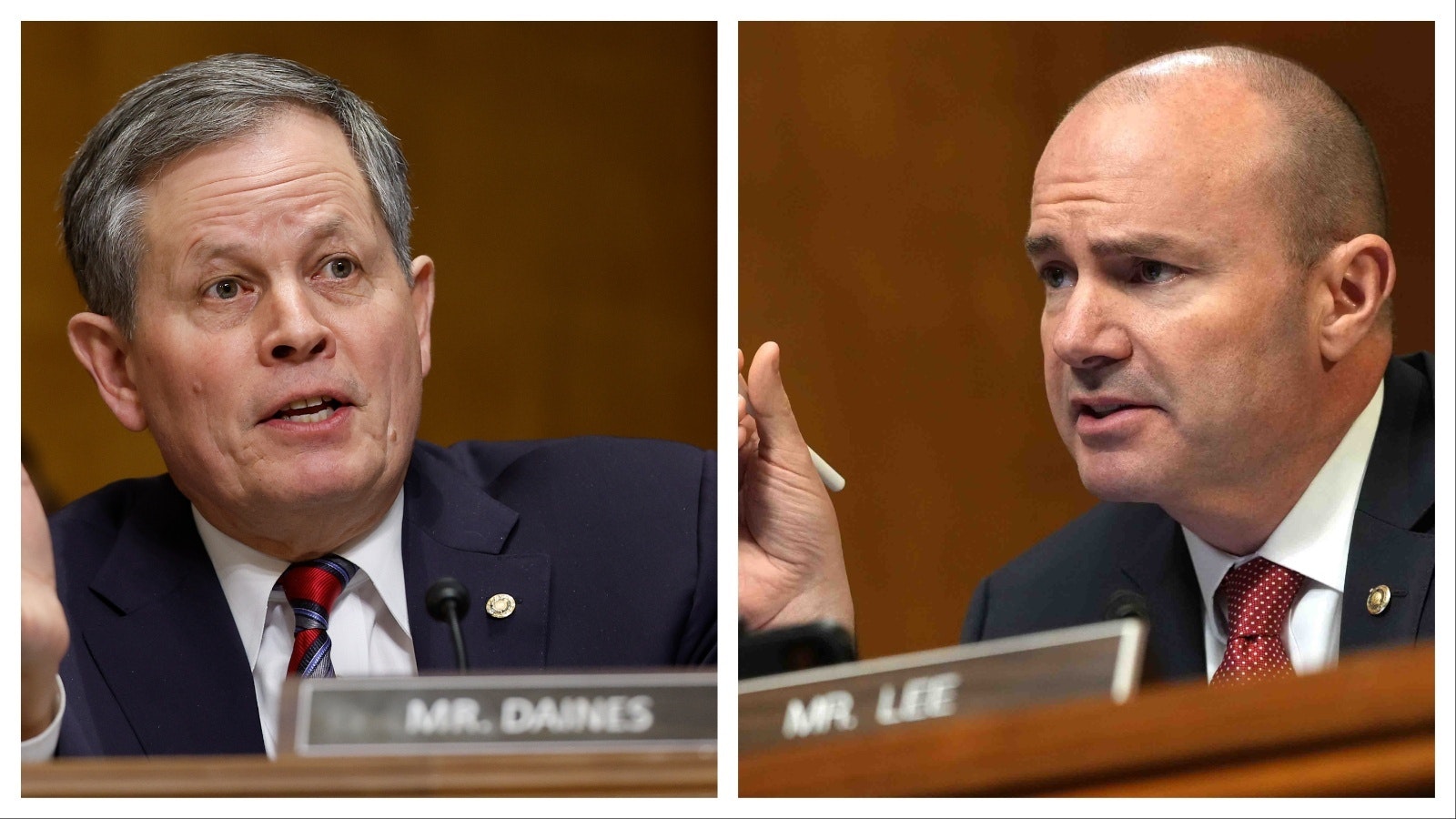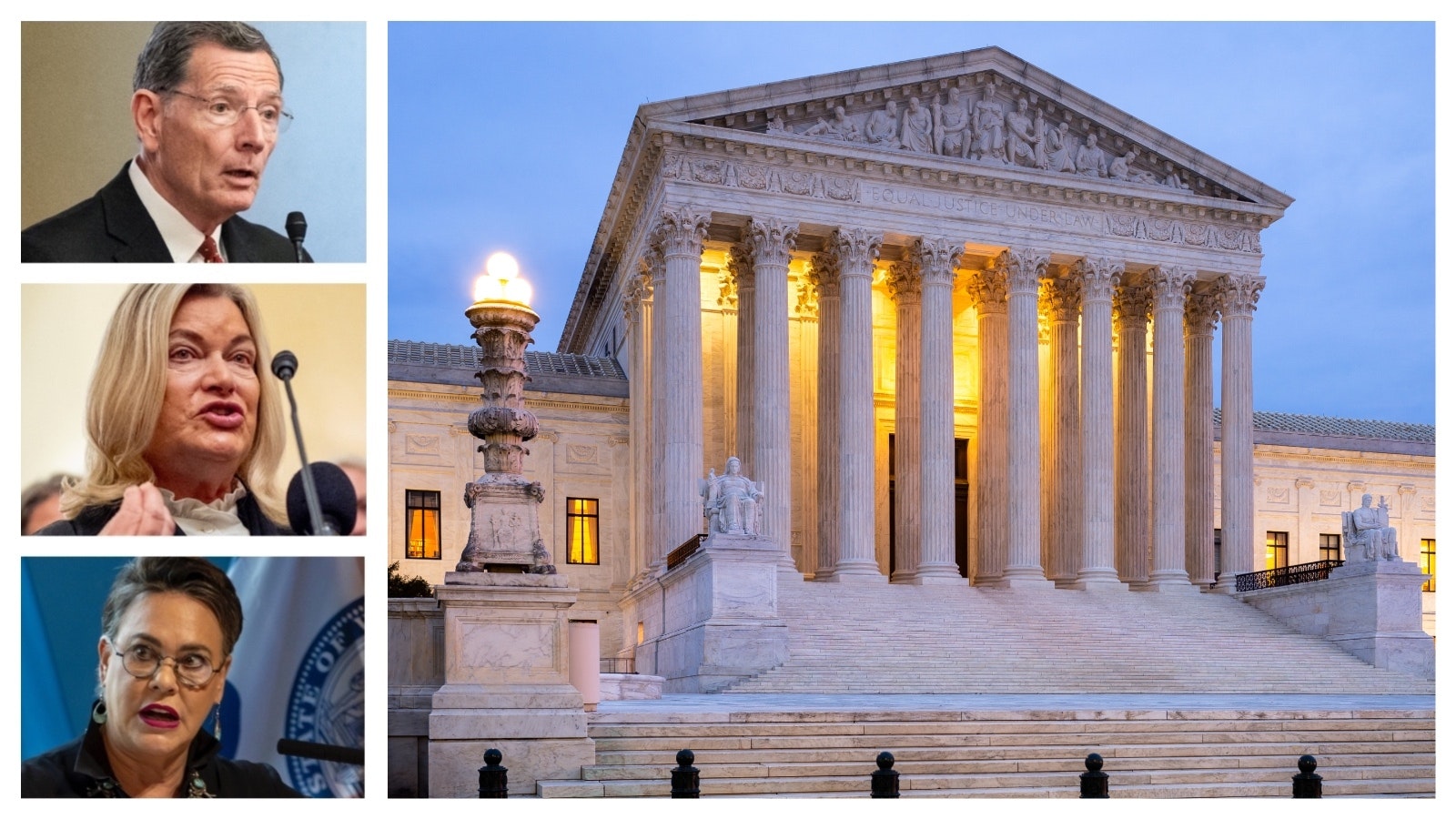There’s an upswell of concern among some Wyoming energy industry leaders about $347 million in cuts the state Senate has made to the governor’s Energy Matching Funds program administered by the Wyoming Energy Authority (WEA).
The program provides money to help bring innovative and “transformative” energy projects to Wyoming, according to the WEA.
This includes carbon capture utilization and storage, carbon dioxide transportation, industrial carbon capture, coal refineries, hydrogen production, biomass, biochar, hydropower, lithium, processing and separation, and battery storage for wind and solar energy.
WEA Executive Director Rob Creager said one of the key missions of the program is to support fossil fuels into the future by evolving with the demands of the global marketplace, where he said even buyers in states like Texas have expressed concerns about Wyoming’s coal emissions, a perception Creager said his group wants to “knock out.”
He said if the amendment to slash nearly $350 million moves forward as passed in the budget, it will have serious implications for Wyoming.
“It means we could definitely lose ground to other pro-energy states,” he said.
Pete Obermueller, president of the Petroleum Association of Wyoming, said he and members of his industry are very concerned about the cuts.
“No matter what it is, it’s all about adding to our core industries,” Obermueller said. “Making sure our core industries expand, hiring more people, producing more resources and keeping our state moving forward. It’s all about adding more and more, it’s not about doing less of anything.”
Travis Deti, executive director of the Wyoming Mining Association, has a similar perspective.
“I do have some concerns,” Deti said. “A lot of the future projects will benefit our industry.”
The Cuts
The cuts include a newly proposed $200 million “large energy projects” fund — all of which would otherwise be spent at the discretion of Gov. Mark Gordon. This fund would be dedicated to projects that cost $50 million or more.
The Energy Matching Funds program gives the governor authority to dole out up to $100 million among entities that also rely on private investors and federal grants. The Legislature added another $50 million to the fund in 2023 and the Joint Appropriations Committee had recommended another $5 million this year.
A total of $150 million has already been allocated for the program since it was established in 2022, but under Sen. Cheri Steinmetz’s amendment, which passed by a 16-15 vote, any money that has not been spent or obligated for a project would revert to the state’s Legislative Reserve Stabilization Account, a savings account that can be tapped into for future use.
In total, $430 million would have been added in this year’s budget for these projects.
“It is the responsibility of the Legislative branch to set policy, vet expenditures and appropriate funds,” said Steinmetz, a Republican from Lingle.
If any of these energy project accounts were to run dry, Gordon also had $80 million at his disposal for “infrastructure matching funds,” which also was stripped from the budget.
Creager said no project through the project has been fully paid for yet.
“These matching funds represent a significant investment in Wyoming that would be going to local communities, as well as helping ensure Wyoming’s fossil fuel industry will continue to be part of the country’s energy mix in the decades to come,” said Michael Pearlman, a spokesperson for the governor.
In a follow up interview, Pearlman said he “can’t overstate the importance” Steinmetz’s amendment has for Wyoming’s economic future and its energy industries.
Leaves Too Much To Governor
It’s the spending authority given to the governor that Steinmetz said concerns her most.
“We all support extractive industries and energy production in Wyoming; however, citizens deserve to weigh in on whether they want taxpayer dollars going to pay for policies like direct air capture of CO2, carbon Capture and sequestration or other projects designed to ‘decarbonize the West,’ achieve net zero or make Wyoming the first carbon negative state,” she told Cowboy State Daily.
In recent months, Steinmetz has become increasingly critical of Gordon’s “all-of-the-above” energy policy and his recent efforts to reduce carbon output in Wyoming.
In a guest column published Wednesday, Steinmetz said the legislative process should be the vehicle for energy policy not "a budget footnote that creates a $430 million dollar slush fund for the governor."
So far, industry has requested $266 million, and Gordon has allocated a total of $56.6 million for eight projects. Of these projects, Creager said seven will benefit fossil fuels, while the other is $9.9 million being offered to nuclear energy company BWXT to study the feasibility of building a small-scale nuclear reactor in Wyoming.
Another project uses artificial intelligence to detect potential oil pipeline leaks.
“That means that even in the tens of thousands of miles of liquid pipeline, we have technologies that can predict and prevent oil leaks,” Obermueller said. “How can that not be great for the land, or industry, for Wyoming? That’s innovation that needs to happen.”
Steinmetz and Sen. Dave Kinskey, R-Sheridan, explained that they believe too much money is being left on the table for the governor to use at his own discretion through the Energy Matching Funds program.
Kinskey also said the approval-to-construction process for the matching funds program is much slower than originally projected, taking away the need for the governor to quickly use money at his own discretion.
Defunding Doesn’t Mean Canceled
Steinmetz and Kinskey also said projects like these should be approved through the legislative process.
“In order to properly vet projects annual bills such as the Omnibus Water bills which are appropriated out of the Water Development accounts, or the Large Project funding bills which are appropriated from the Wildlife Natural Trust Fund, require Legislative interim committee work which leads to a bill, action by the entire Legislature and then action by the governor,” Steinmetz said.
Steinmetz has said, and Kinskey also made the claim at Wednesday night’s Joint Conference Committee meeting on the budget that just because the Energy Matching Funds program has been defunded for the foreseeable future doesn’t mean projects like these can’t continue to be approved in Wyoming or that the program has been canceled.
Reps. Lloyd Larsen, R-Lander, and Tom Walters, R-Casper, expressed confusion about this argument at Wednesday’s meeting, as well as doubt that approved projects will be able to proceed.
“If the funding is not there the concept goes away,” Walters said. “It can’t proceed if the process is not gone.”
Although he voted for the overall budget, as he always has since entering the Legislature, Sen. Bill Landen, R-Casper, said the cuts to the energy program and other programs cause him great concern.
“Anytime you can leverage funds and outside support it’s a win for Wyoming,” he said.
Sen. Chris Rothfuss, D-Laramie, was a bit more pointed.
“When you see that innovation from oil and gas, and now you see the conservatives in the Senate coming out against that, it’s clear that they’re not aligned with the interests of the state of Wyoming,” he said.
Steinmetz and certain other conservatives in the Senate have expressed skepticism about taking new approaches to energy production, and particularly green energy.
Earlier in the legislative session, Steinmetz hosted at her Senate Agriculture Committee meeting members of the CO2 Coalition, a group that denies human-caused climate change, and at the hearing criticized numerous forms of energy production that stray from more traditional approaches.
Why It Matters
Creager said because of the state money awarded, the eight participating entities have been able to leverage $121 million in federal and private money. Many of the federal matching programs, he said, are built on three-to-one, four-to-one, and sometimes as much as eight-to-one federal matches.
“There’s a huge bang for buck there,” he said.
Creager said there’s no other state in the country that has a program equivalent to Wyoming’s Energy Matching Fund, which he believes has helped the state gain a competitive edge for large energy projects.
“We’re one of the few states, if any, to put a sizable amount of money behind energy projects,” he said. “There’s no ifs or ands about it, it’s a competitive market right now.”
In North Dakota last December, a carbon capture and storage project located next to an existing power plant was selected for up to $350 million in federal funding.
North Dakota has also invested significantly more in enhanced oil recovery than Wyoming, and a bill that would have increased Wyoming’s investment in this field failed to receive introduction earlier in the session. Obermueller said there are 75 oil fields in Wyoming that each have more than 10 million barrels of recoverable oil today.
“That is not recoverable without helping it get out, and carbon is one of the best ways to help you get it out,” Obermueller said. “If we’re all of a sudden as a state going to turn around and not support that, it’s a new day.”
When it comes to carbon capture, Deti said his organization fully supports it for emissions. Creager said he sees the purpose of investing in carbon capture as keeping Wyoming’s coal industry alive into perpetuity.
Renny MacKay, Gordon’s policy advisor, said legacy industries in Wyoming like coal, uranium and trona also can be benefitted by the Energy Matching Funds program.
“That’s the kind of thing we’re talking about to add living value to natural gas, critical minerals,” MacKay said. “These are areas where the private sector is making big investments in.”
Creager said a total of $41.3 million of the $56.6 million awarded has been committed through finalized contracts, but only $3.6 million has been physically spent. In total, he said the program has $65.3 million in its coffers that the amendment makes unavailable.
“They’re pulling the carpet out for most of these projects,” he said.
Because of the language of the amendment, any money that hasn’t been obligated and spent would be revoked. Further, Creager said certain projects have only been approved in piecemeal fashion, so the revocation of this money would leave some of them without a future funding source even though their construction has already started.
He said this has great concern for members of the entities participating in these projects.
These recent developments haven’t stopped the Energy Matching Funds program from moving forward for now. On Wednesday, a review panel for the program recommended nearly $11 million to evaluate two projects that could help energize electric vehicles and squeeze more oil out of the ground.
Other Significant Cuts
Also cut from the Senate’s budget was $75 million proposed for the University of Wyoming to buy, with the assistance of matching federal money, a subatomic microscope.
Sen. Jim Anderson, R-Casper, brought the amendment and said he only proposed the cut in response to the way the proposal was made, by an individual professor who went to Kinskey personally to request the money rather than gaining the support and endorsement of university leadership first.
“One faculty member without talking to anybody else,” Anderson said.
Another cut within Steinmetz’s amendment was for a $24 million addition to Wyoming’s Clean Water Revolving Funds, an account that leverages a much larger federal match to offer loans to towns and counties combined with state money for various water infrastructure projects. There is still a $309.2 million balance in this fund.
David Fraser, executive director of the Wyoming Association of Municipalities, said the water account has been critical for helping many smaller communities acquire the necessary funding to replace aging and critically underperforming infrastructure, which sometimes creates an active hazard for residents, as recently seen in the towns of Rawlins and Wheatland.
“That’s huge to use because the nexus for making a lot of these projects work is the federal matches,” Fraser said.
McKay said in a town like Lusk, a single water project could create 150-200 jobs.
Although Steinmetz said she did not intend to make this cut, she was noncommittal about advocating for its restoration.
“The Senate will decide together,” she said.
What Happens Next?
The House’s version of the biennial budget had none of these cuts.
The Senate and House will both consider their biennial budgets during the Joint Conference Committee (JCC) meetings that started Wednesday and will continue throughout the week.
If the two chambers can’t find a middle ground after the first series of negotiations, the JCC will move to a more open format, where any change can be made to the budget, whether or not there was a discrepancy between the two houses.
Leo Wolfson can be reached at leo@cowboystatedaily.com.





